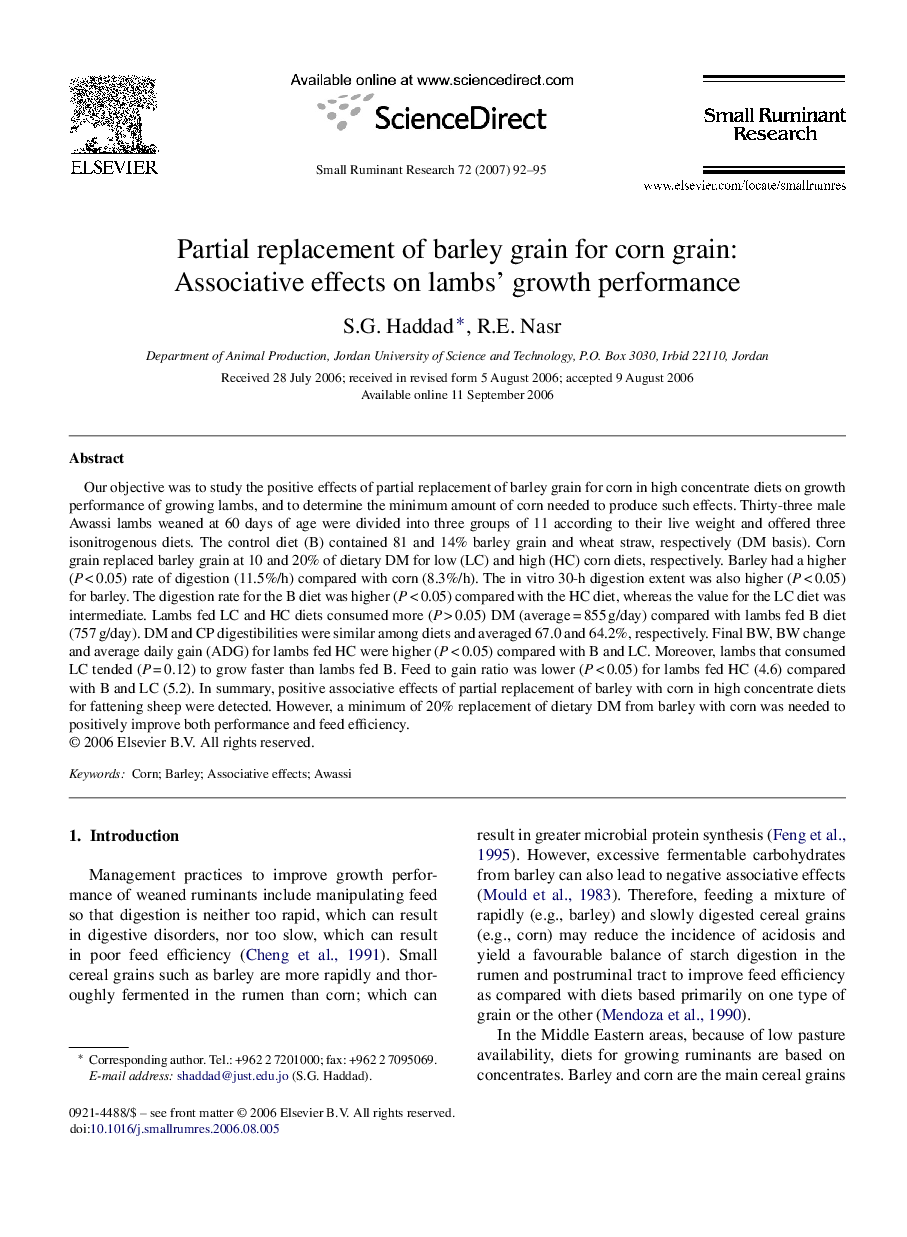| Article ID | Journal | Published Year | Pages | File Type |
|---|---|---|---|---|
| 2458254 | Small Ruminant Research | 2007 | 4 Pages |
Our objective was to study the positive effects of partial replacement of barley grain for corn in high concentrate diets on growth performance of growing lambs, and to determine the minimum amount of corn needed to produce such effects. Thirty-three male Awassi lambs weaned at 60 days of age were divided into three groups of 11 according to their live weight and offered three isonitrogenous diets. The control diet (B) contained 81 and 14% barley grain and wheat straw, respectively (DM basis). Corn grain replaced barley grain at 10 and 20% of dietary DM for low (LC) and high (HC) corn diets, respectively. Barley had a higher (P < 0.05) rate of digestion (11.5%/h) compared with corn (8.3%/h). The in vitro 30-h digestion extent was also higher (P < 0.05) for barley. The digestion rate for the B diet was higher (P < 0.05) compared with the HC diet, whereas the value for the LC diet was intermediate. Lambs fed LC and HC diets consumed more (P > 0.05) DM (average = 855 g/day) compared with lambs fed B diet (757 g/day). DM and CP digestibilities were similar among diets and averaged 67.0 and 64.2%, respectively. Final BW, BW change and average daily gain (ADG) for lambs fed HC were higher (P < 0.05) compared with B and LC. Moreover, lambs that consumed LC tended (P = 0.12) to grow faster than lambs fed B. Feed to gain ratio was lower (P < 0.05) for lambs fed HC (4.6) compared with B and LC (5.2). In summary, positive associative effects of partial replacement of barley with corn in high concentrate diets for fattening sheep were detected. However, a minimum of 20% replacement of dietary DM from barley with corn was needed to positively improve both performance and feed efficiency.
